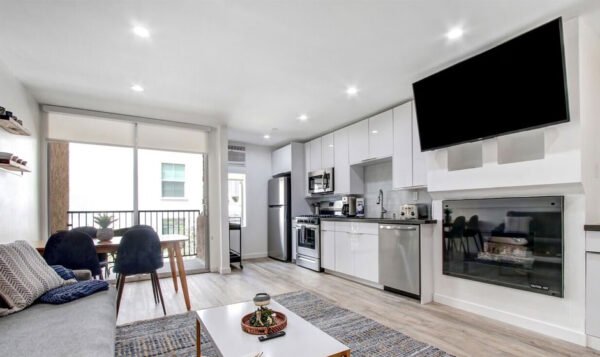What You Need to Ensure Your Garden Always Looks Best on the Street

Most streets have that one garden that always looks a little better than the rest. Not because it’s filled with rare plants or designed by a professional, but because it’s been cared for in a smart, consistent way. If you’re aiming for the best-looking garden on your block, it’s not about working harder. It’s about knowing what actually makes a difference.
Here’s what separates the gardens people admire from the ones they walk straight past.
First, Get Your Hands on the Right Tools
You don’t need a shed full of gear to keep your garden in shape, but trying to stay on top of things without the right tools will slow you down fast. A few key basics from a reputable supplier like the Worx can completely change how efficient and enjoyable garden care feels.
A sharp pair of pruners is a must. Whether you’re trimming back perennials or deadheading, blunt blades make the job messier than it needs to be. The same goes for a solid hand trowel and fork for planting, weeding, and working smaller beds. If you have grass, invest in a quality lawn edger or shears. Clean, defined edges can make even an average lawn look professionally maintained.
A reliable watering can or hose system matters more than people think. If watering is a hassle, chances are you’ll put it off. That’s when things dry out, go crispy, and your whole garden starts to lose its shine.
And finally, gloves that fit well and don’t make everything harder. The kind that let you feel what you’re doing while still protecting your hands. You’ll be more likely to jump in and deal with quick jobs as they pop up, which is exactly how a great-looking garden stays that way.
Build a Garden With Good Bones
Once your tools are sorted, focus on structure. The best gardens, no matter the size or style, have a clear sense of shape. Not every inch has to be perfectly symmetrical or formal, but there should be a sense of balance and intention.
Start with the edges. Are your borders straight, curved, or something in between? Do they make sense with your space? Defined edges, whether created with bricks, wood, or just a clean spade line, instantly make things look more finished.
Paths and walkways also matter more than people often realize. A winding gravel path or some simple stepping stones not only guide movement but help break up planting areas in a way that looks deliberate. It also gives the eye somewhere to travel, which makes even small gardens feel more spacious and designed.
If there’s space, add a focal point. That could be a flowering tree, a sculptural evergreen, or even a painted fence panel with a climbing plant. It gives the garden a moment of visual pause and breaks up the repetition of plants and lawn.
Pick Plants That Can Handle Real Life
Choosing the right plants isn’t just about what looks good in a catalog. It’s about finding combinations that can handle your soil, your light levels, and how much time you’re realistically going to give them.
One of the best ways to build a reliable garden is to mix plant types that cover different jobs. Evergreens give you structure year-round. Perennials provide seasonal color. Grasses add movement and texture. Bulbs pop up when you least expect them and bring life to the early or late seasons when the rest of the garden is still catching up.
Think about how plants grow over time. That small shrub from the nursery might be six feet wide in three years. If your beds are overcrowded, everything starts fighting for light and water. It leads to mess, mildew, and more maintenance than you want.
And avoid the trap of planting too many different things just for variety’s sake. A garden with repetition, rhythm, and some restraint always reads better than one that feels like a plant sale exploded.
Stay on Top of the Basics, Always
The biggest difference between a garden that turns heads and one that doesn’t is maintenance. It’s not glamorous, but it works. The trick is to make these tasks part of your routine so they never pile up into a full weekend of damage control.
Here’s where your time should go:
- Regular weeding– A quick ten-minute session once a week stops things from getting out of hand.
- Deadheading– Removing faded blooms keeps plants flowering longer and prevents them from wasting energy on seed production.
- Lawn edges– Even if you don’t mow that often, keeping the edges crisp gives the impression of a freshly cut space.
- Mulching– Done once or twice a year, mulch feeds the soil, holds moisture, and keeps weeds down. It also instantly makes beds look neater.
- Trimming– Whether it’s hedges, perennials, or climbers, regular cutting back helps plants stay healthy and keeps the whole garden under control.
None of these jobs take long on their own, but together they create that clean, cared-for feel that separates the good gardens from the great ones.
A Few Smart Touches Go a Long Way
You don’t need dozens of decorative elements. A few carefully chosen extras can quietly elevate the whole space.
Think about how your garden looks from the street. That first view is what makes people notice. Clean paving, matching containers by the door, or a freshly painted fence make a big difference. Outdoor lighting, even basic solar versions, adds atmosphere without much effort. They also highlight your planting after dark, which is when many people are walking or driving past.
Hiding clutter is also underrated. Bins, tools, watering cans, and hoses—find a home for them out of sight. Even if your planting is perfect, a visible mess pulls the whole look down.
Final Check: What Does Your Garden Say About Your Home?
Before you buy a single plant or dig a new bed, step back and really look at your space. What message is it sending? Does it feel like a part of your home or more like a neglected patch between the door and the sidewalk?
Here’s a simple review list you can run through now and then:
Are the edges neat and defined?
Is there something to catch the eye from the street?
Do the plants feel balanced in scale and shape?
Is everything generally tidy, healthy, and thriving?
If the answer is yes to most of those, you’re already well ahead of the curve. If not, it’s usually just a matter of small adjustments, not a full overhaul.
Make Your Garden the One People Notice
The best gardens aren’t about perfection or trends. They’re about care, rhythm, and choosing the right elements that work together. When you’ve got good tools, a clear structure, sensible plants, and you stay on top of the basics, the rest falls into place.



